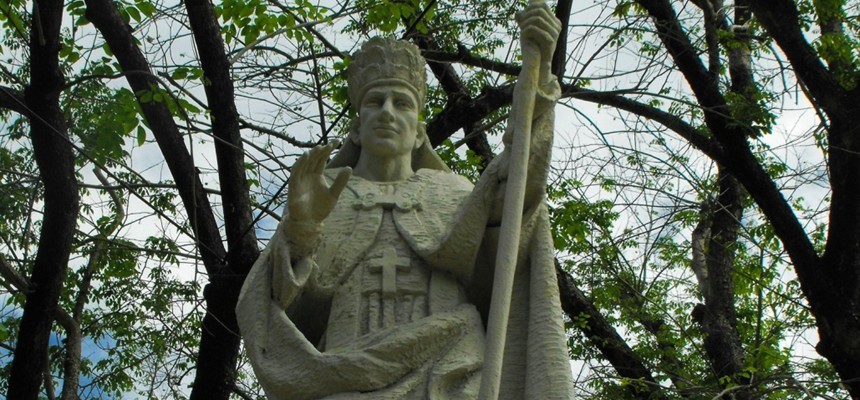Little is known about Fabian’s early years other than that his father’s name was Fabius and he was a nobleman with land.
His story really begins when Bishop Anterus died in January 236 after a very short reign. As is common today, many went to watch the election of the new bishop. Fabian left his farm and went into the city, also. This was a time before the secret elections, since those gathered to elect the new bishop were in the same room with the audience. As the electors discussed various qualified men, Fabian was in the hall watching. Suddenly a dove flew through the window and hovered over the head of Fabian. People began to point and shout. It reminded them of the descent of the Holy Spirit at Jesus’ baptism. The electors unanimously proclaimed Fabian the bishop on January 20, 236.
Bishop Fabian is accredited with several important organizational steps in the Church. He divided Rome in seven sections, assigning one deacon to each section. Then he assigned one sub-deacon from each section, to collect from each notary, the acts of martyrdom of those who were killed. He also sent seven bishops, including St. Denis, to Gaul to establish churches there in 245.
The bishop was also one who managed to keep peace in the lull between persecutions. He appears to be the one who finally got the followers of Hippolytus to rejoin the Roman Church. He was the one who brought the bodies of Pontian and Hippolytus back from Sardinia to be buried with honors. And he was the one who fought a heresy in North Africa which caused him to condemn the teachings of the bishop Privatus. Having peace and time available, Bishop Fabian worked to enhance the catacombs. The famous Origen defended his orthodoxy in front of Fabian after being condemned at Alexandria and at a synod chaired by Anterus.
But time ran out. Decius became emperor and he was not accepting of the Christians. Rather than a local roundup, Decius ordered an empire-wide persecution for those Christians who would not worship the Roman gods in public. Fabian was arrested early in the persecution and died, possibly in prison, on January 20, 250. He was initially buried at the Catacombs of St. Callixstus, where you can still find a large stone which covered his first grave. It is inscribed “Fabian/Bishop/Martyr”. His body has since been moved to the Church of St. Sebastian of the Catacombs.
The rule of Fabian established the bishop of Rome as more than just a bishop and with honor above the others. This was the one place to go for the final say. He was seen as looking for peace and orthodoxy and is remembered as such.
A prayer for you: “Pope Saint Fabian, it’s so easy to believe that peace means a life without conflict or suffering. Help us to see that the only true peace is the peace Christ brings. Never let us as a Church or as individual Christians choose to deny our beliefs simply to avoid an unpleasant situation. Amen.” (Prayer found at newworldencyclopedia.org)


Recent Comments